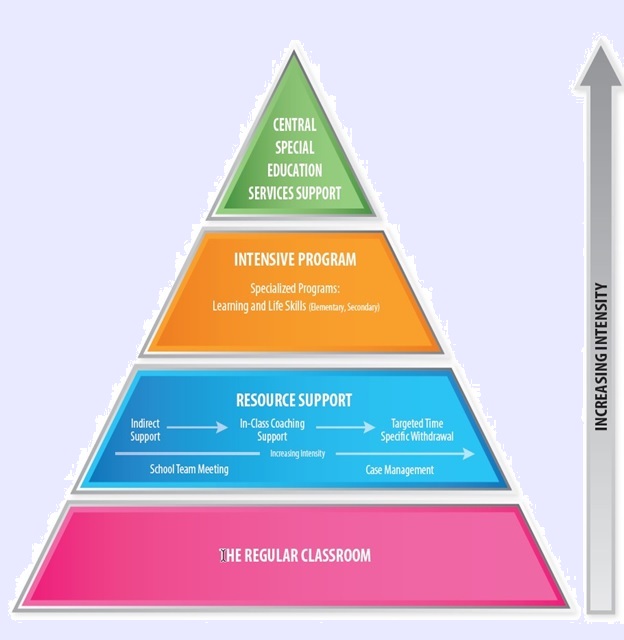Special Education Program Delivery Model
The Kawartha Pine Ridge District School Board (KPRDSB) is committed to providing programming to best meet student needs. Effective programming includes:
- early identification of learning needs
- differentiated instruction
- universal design for learning
- materials to support programs
- ongoing assessment for learning
- professional learning
- ongoing communication with parents/guardians and students.
What action is taken should a child require support?
When challenges affecting learning arise, the school takes action to assist the student. Typically, discussions start between the parents/guardians and the classroom teachers. Discussions with parents is to begin as soon as academic or behavioural difficulties arise. They would discuss the situation and share information related to the student's progress. If there are further concerns after initial consultation, parents will usually be invited to attend a case conference.
Inclusion in the Regular Classroom
To facilitate inclusion of students with special needs in the regular classroom, the following may occur:
- creation of entry plans in collaboration with all partners, including parents/guardians, school staff, community agencies and Board staff
- development, implementation, and review of an Individual Education Plan (IEP)
- establishment of more intensive supports, if required
- transition and exit planning in collaboration with all partners
Intensive or Specialized Supports
There may be pupils who require more intensive support. The school principal can guide parents/guardians in understanding the placements available to students. In addition to placements in KPRDSB, consideration may be given to opportunities in Ministry of Education and Training Provincial or Demonstration Schools.
Placements within KPRDSB
Placements provided in the Kawartha Pine Ridge District School Board for students who are presented to the Identification, Placement and Review Committee (IPRC) are:
· Regular Class with Indirect Support
· Regular Class with Resource Assistance
· Regular Class with Withdrawal Assistance
· Special Education Class with Partial Integration
· Full-time Special Education Class (Learning and Life Skills Program)
Alternative Placements
The alternatives to the Board's range of placements may include:
· SAL (Supervised Alternative Learning)
· Home Instruction (in accordance with the Board Policy)
· Provincial Demonstration Schools (i.e., Sagonaska, Trillium, Sir James Whitney)
· Campbell Children's School (Clarington)
· Care, Treatment, Custody and Corrections facilities, often referred to as Section 23 programs (admissions by the agency)
Discussion of placement options beyond those provided by the Board commence at the school level.



